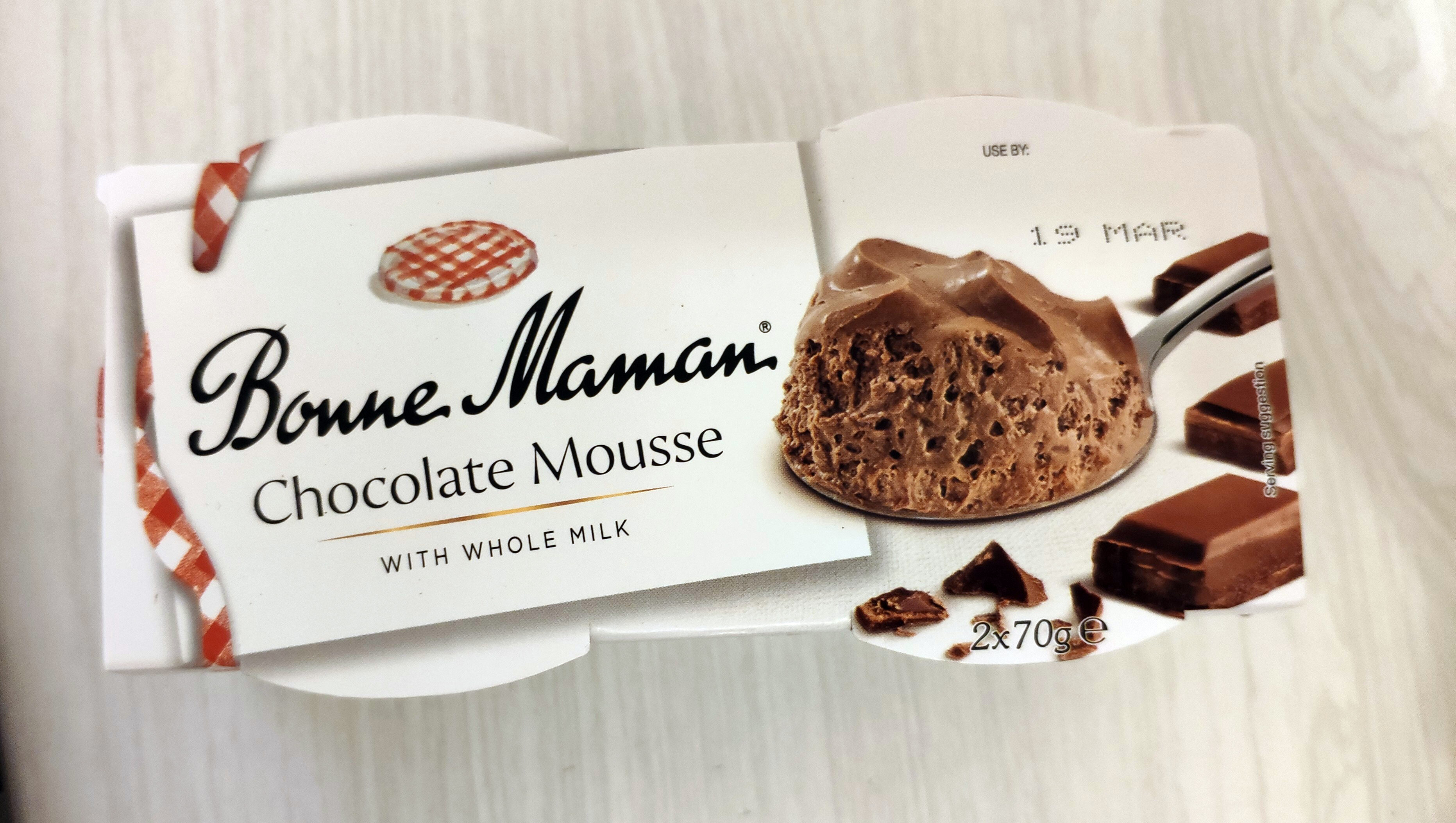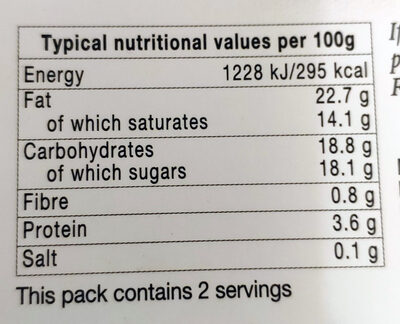Chocolate mousse - Bonne Maman - 140g
This product page is not complete. You can help to complete it by editing it and adding more data from the photos we have, or by taking more photos using the app for Android or iPhone/iPad. Thank you!
×
Barcode: 3608580782063 (EAN / EAN-13)
Common name: Milk chocolate mousse
Quantity: 140g
Brands: Bonne Maman
Categories: en:Dairies, en:Desserts, en:Dairy desserts, en:Chocolate desserts, en:Sweet mousses, en:Dairy Mousses, en:Chocolate mousses
Labels, certifications, awards:
en:No artificial flavors, en:Non-vegetarian, en:Contains milk, en:Do not freeze, en:Green Dot, en:No artificial colors, en:No artificial colours or flavours, en:No hydrogenated fats
Traceability code: GB MZ 006
Link to the product page on the official site of the producer: https://www.bonnemaman.co.uk/products/de...
Stores: Sainsbury's
Countries where sold: An Fhraing, An Rìoghachd Aonaichte
Matching with your preferences
Environment
Carbon footprint
Packaging
Transportation
Report a problem
Data sources
Product added on by kiliweb
Last edit of product page on by alia.
Product page also edited by autorotate-bot, openfoodfacts-contributors, teolemon, yuka.ZWJoZFNhZ0JnZU1Wby9ZQzcwM08vb3hMbDg2RGVsMlpBdmRLSVE9PQ.










